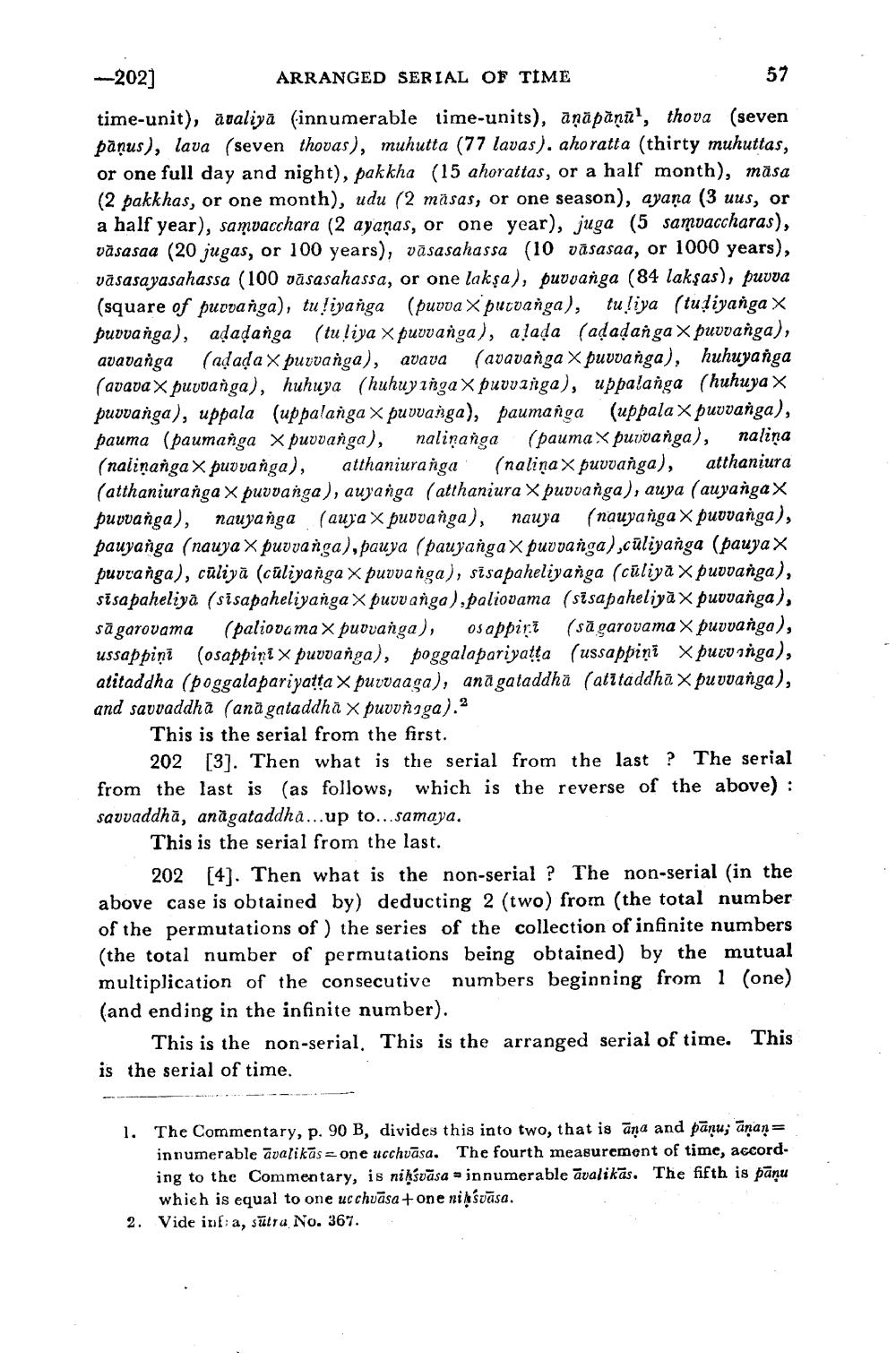________________
-202]
ARRANGED SERIAL OF TIME
57
time-unit), avaliya (innumerable time-units), anapanu1, thova (seven pāņus), lava (seven thovas), muhutta (77 lavas). ahoratta (thirty muhuttas, or one full day and night), pakkha (15 ahorattas, or a half month), mäsa (2 pakkhas, or one month), udu (2 mäsas, or one season), ayaṛṇa (3 uus, or a half year), samvacchara (2 ayanas, or one year), juga (5 samvaccharas), vasasaa (20 jugas, or 100 years), vasasahassa (10 vasasaa, or 1000 years), vasasayasahassa (100 vasasahassa, or one lakṣa), puvvanga (84 laksas), puvva (square of puvvanga), tuliyanga (puvva puvvanga), tuliya (tuḍiyanga X puvvanga), aḍaḍanga (tuliya x puvvanga), alaḍa (adaḍanga puvvanga), avavanga (aḍadax puvvanga), avava (avavanga puvvanga), huhuyanga (avava puvvanga), huhuya (huhuyinga puvvanga), uppalanga (huhuya puvvanga), uppala (uppalanga x puvvanga), paumanga (uppala puvvanga), pauma (paumanga Xpuvvanga), nalinanga (pauma puvvanga), nalina atthaniuranga (nalinanga puvvanga), (nalinax puvvanga), (atthaniuranga puvvanga), auyanga (atthaniura X puvvanga), auya (auyanga puvvanga), nauyanga (auya x puvvanga), nauja (nauyanga puvvanga), pauyanga (nauya puvvanga), pauya (pauyanga puvvanga),culiyanga (pauya puvvanga), culiya (culiyanga puvvanga), sisapaheliyanga (culiya puvvanga), sisapaheliya (sisapaheliyanga puvv anga),paliovama (sisapaheliya puvvanga), să garovama (paliovama puvvanga), os appiri (sa garovama puvvanga), ussappini (osappini puvvanga), poggalapariyaṭṭa (ussappini purvinga), atitaddha (poggalapariyaṭṭa puvvaaga), anagataddha (atitaddha puvvanga), and savvaddha (ana gataddha puvvňaga).
atthaniura
This is the serial from the first.
202 [3]. Then what is the serial from the last? The serial from the last is (as follows, which is the reverse of the above) : savvaddha, anagataddha...up to...samaya.
This is the serial from the last.
202 [4]. Then what is the non-serial? The non-serial (in the above case is obtained by) deducting 2 (two) from (the total number of the permutations of) the series of the collection of infinite numbers (the total number of permutations being obtained) by the mutual multiplication of the consecutive numbers beginning from 1 (one) (and ending in the infinite number).
This is the non-serial. This is the arranged serial of time. This is the serial of time.
1. The Commentary, p. 90 B, divides this into two, that is ana and panu, anan= innumerable avalikas one ucchvasa. The fourth measurement of time, according to the Commentary, is niksvasa innumerable avalikās. The fifth is paņu which is equal to one ucchuasa + one niksvasa.
2. Vide inf: a, sutra, No. 367.




